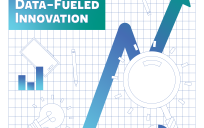In our first chapter of the IBM and GovLoop guide series, we explained how big data has fundamentally changed the way government does business. But for many institutions, understanding the applications of big data is just the start of the analytics journey. In this chapter we dive deeper and focus on how deploying a data-driven approach to counter fraudulent activity can cut costs at your agency and help you deliver services more efficiently and effectively. Today it is essential to remember that government agencies are collecting troves of transactional and behavioral data. If officials can understand the patterns, actions and processes behind these transactions, they can better understand their data as a means to combat fraud. We’ll show you how throughout this chapter. Specifically you’ll receive:
- An overview of IBM’s approach to counter fraud.
- Insights from Carole Longendyke, counter-fraud client solutions professional at IBM, on how countering fraud is helping government become more efficient.
- An in-depth look at New York state’s counter-fraud approach.
- Best practices to get started on your anti-fraud efforts.
Strategies to combat fraud come at an important time for government. As citizens demand more digital services, the risks of fraud, waste and abuse increase. Criminals have more outlets to attempt to compromise and obtain critical government information. Conspirators can use this data to commit acts of fraud, and because government services are so complex, without a progressive and proactive information technology solution, agencies may never even know the depth of fraud, waste and abuse occurring. For instance, an Internal Revenue Service investigation found that a Louisiana woman submitted false reimbursement claims to Medicare for services that she had not administered. She was ordered to pay more than $1.2 million in restitutions.
But not all thefts are detected and caught. People nationwide commit scores of tax evasion schemes and fraudulent white-collar crimes daily. The U.S. health care industry is currently losing an estimated $180 billion per year due to improper payments. On average, individual healthcare payers are losing 10 percent of their annual revenues to these improper payments. Advances in technology also enable deception schemes to be more sophisticated and perpetrators to more easily slip through the cracks.
But fraud is not just about financial issues; it is also about protecting consumer and proprietary data to build trust with customers. Government leaders now recognize the great opportunity their data holds in helping them spot abnormalities and stop tax and medical fraud, improper government payments, and insurance claims. That’s why IBM recently launched its “Smarter counter fraud” initiative, leveraging IBM’s expertise in analytics to combat waste, fraud and abuse in the public sector.
In our next section, Carole Longendyke, counter-fraud client solutions professional at IBM, tells us more about the company’s approach to curbing fraudulent activity. We all love a good detective story. Whether you tune into “NCIS” or “Law & Order” or leaf through the pages of a Sherlock Holmes story, you’re probably going to get hooked quickly. Within these stories, law enforcers attempt to solve crimes by interviewing suspects, gathering evidence, utilizing crime labs and putting everything together to find the perpetrators and bring them to justice. But what if the crime was detected and stopped before it occurred? In the world of government counter-fraud strategy, predictive analytics aims to do just that.
Today, people use myriad digital technologies to engage with government organizations. Although these new tools have made it easier for government/citizen collaboration, making the government available round-the-clock on the web opens more areas to fraud. But with an anti-fraud strategy, agencies can combat scams before they happen and take a proactive stance to be more efficient in service delivery.
Countering fraud can rid agencies of unnecessary hassles and save millions – even billions – of dollars per year. However, such strategies aren’t one-size-fits-all. In fact, a poorly designed and implemented anti-fraud strategy could do more harm than good and excessively burden government systems and resources. “The key is in using smarter tools and resources in smarter ways,” said Longendyke, an IBM counter-fraud expert.
As criminals worldwide become more agile and sophisticated, governments must do the same. Big data plays a major role, and no efficient strategy can go without predictive analytics, collaboration and an integrated approach to information management and sharing.
“When we talk about efficient and effective government, we think sensible use of resources that accomplishes goals without undue burden or roadblocks,” Longendyke said. “That means intercepting and stopping fraud, but also reducing or, to the extent possible, eliminating false positives in fraud detection.” Predictive analytics is crucial in this respect. It uses a vast amount of data to detect serious risks without compromising mission impact or efficiency.
“Predictive analytics is a crystal ball, of sorts, in that it uses historical fraud data and statistics to anticipate fraudulent activities based on previously identified indicators,” Longendyke said. “Rules and fraud models are then applied in a decision environment where fraud points and thresholds are applied. Transactions or events that don’t exceed the statistical threshold can be confidently accelerated, thereby freeing resources to focus on those events that have a higher statistical relevance with respect to fraud.”
To learn more how your agency can benefit from IBM’s counter fraud approach, be sure to check out the full guide.

The IBM Analytics Solution Center (ASC) is part of a network of global analytics centers that provides clients with the analytics expertise to help them solve their toughest business problems. Check out their Analytics to Outcomes group on GovLoop.





Leave a Reply
You must be logged in to post a comment.